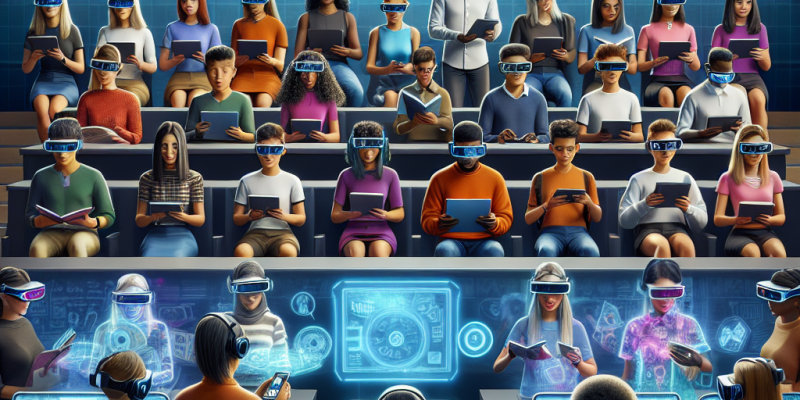Augmented Reality: Transforming Retail and Education in 2024

In recent years, augmented reality (AR) has evolved from a novel technology to a powerful tool reshaping various sectors, particularly retail and education. As we delve into 2024, the advancements in AR promise to revolutionize how consumers shop and how students learn, ultimately enhancing user experiences and engagement across these domains.
AR in Retail: A Shopping Revolution
Enhancing the In-Store Experience
In 2024, retail spaces are becoming immersive environments that blend the physical and digital worlds, thanks to AR. Retailers are increasingly adopting AR applications that offer consumers interactive experiences. Shoppers can point their smartphones at products to access a wealth of information, including detailed specifications, user reviews, and even tutorials on how to use the items. For instance, a consumer might visit a furniture store, and by using an AR app, they can visualize how a piece of furniture would look in their home environment, complete with customization options like color and size.
Virtual Try-Ons
Cosmetics and apparel brands have been at the forefront of AR integration, allowing customers to virtually try on products before making a purchase. The technology has advanced significantly in 2024, providing realistic simulations that adjust to a user’s facial features and movements in real time. Fashion retailers are rolling out AR mirrors that let shoppers see how clothes fit without the hassle of changing rooms. This not only enhances convenience but also boosts conversion rates and reduces return rates, a win-win for both retailers and consumers.
Personalization and Targeted Marketing
AR is also enabling retailers to create personalized shopping experiences. By analyzing consumer behavior and preferences through sophisticated algorithms, brands can use AR to deliver tailored content and promotions. Imagine walking through a store and receiving personalized offers based on your shopping habits, all delivered through an AR interface. This level of customization fosters brand loyalty and encourages impulse purchases, making AR an invaluable asset for retail marketing strategies in 2024.
AR in Education: A New Learning Paradigm
Interactive Learning Environments
In the education sector, 2024 marks a significant leap in how students interact with educational content. AR is providing dynamic, interactive learning environments that cater to diverse learning styles. Rather than absorbing information passively, students can engage with 3D models, animations, and simulations that bring complex concepts to life. For example, a biology class can transform into a virtual laboratory where students dissect a 3D frog, gaining hands-on experience without the associated costs and ethical concerns of traditional dissection.
Accessibility and Inclusivity
AR is also making education more accessible. In 2024, the technology is being widely integrated into curricula to support students with learning disabilities by offering tailored, immersive experiences. For instance, visual learners can benefit from AR-driven visual aids, while auditory learners can access interactive audio elements. This inclusive approach ensures that all students have the opportunity to thrive in their educational pursuits, regardless of their learning preferences.
Collaborative Learning
Furthermore, AR is enhancing collaborative learning experiences. Students can participate in group projects that involve AR elements, encouraging teamwork and communication skills. Through AR applications, they can work together in real time, regardless of their physical location. For example, geography students could explore a virtual representation of a different part of the world, fostering collaboration and understanding among peers.
Looking Ahead: The Future of AR
As we move further into 2024 and beyond, the integration of augmented reality in retail and education is expected to deepen, driven by advancements in technology, AI, and 5G connectivity. As AR becomes more sophisticated and widely available, its applications will continue to evolve, creating new opportunities for innovative interactions and experiences.
However, as with any technology, there are challenges to consider. Privacy concerns, data security, and the digital divide must be addressed to ensure equitable access to AR benefits across all demographics. Ethical considerations surrounding user data and its use in targeted marketing must also be at the forefront of discussions as AR becomes more entrenched in our day-to-day lives.
Conclusion
In conclusion, augmented reality is poised to play a transformative role in retail and education in 2024. By creating immersive, engaging, and personalized experiences, AR is not only enhancing consumer interactions but also reshaping how we approach learning. As we embrace this transformative technology, it is essential to strike a balance between innovation and ethical responsibility, ensuring that its benefits are maximized for everyone. The future of AR is bright, paving the way for a more interactive and connected world in retail and education alike.














